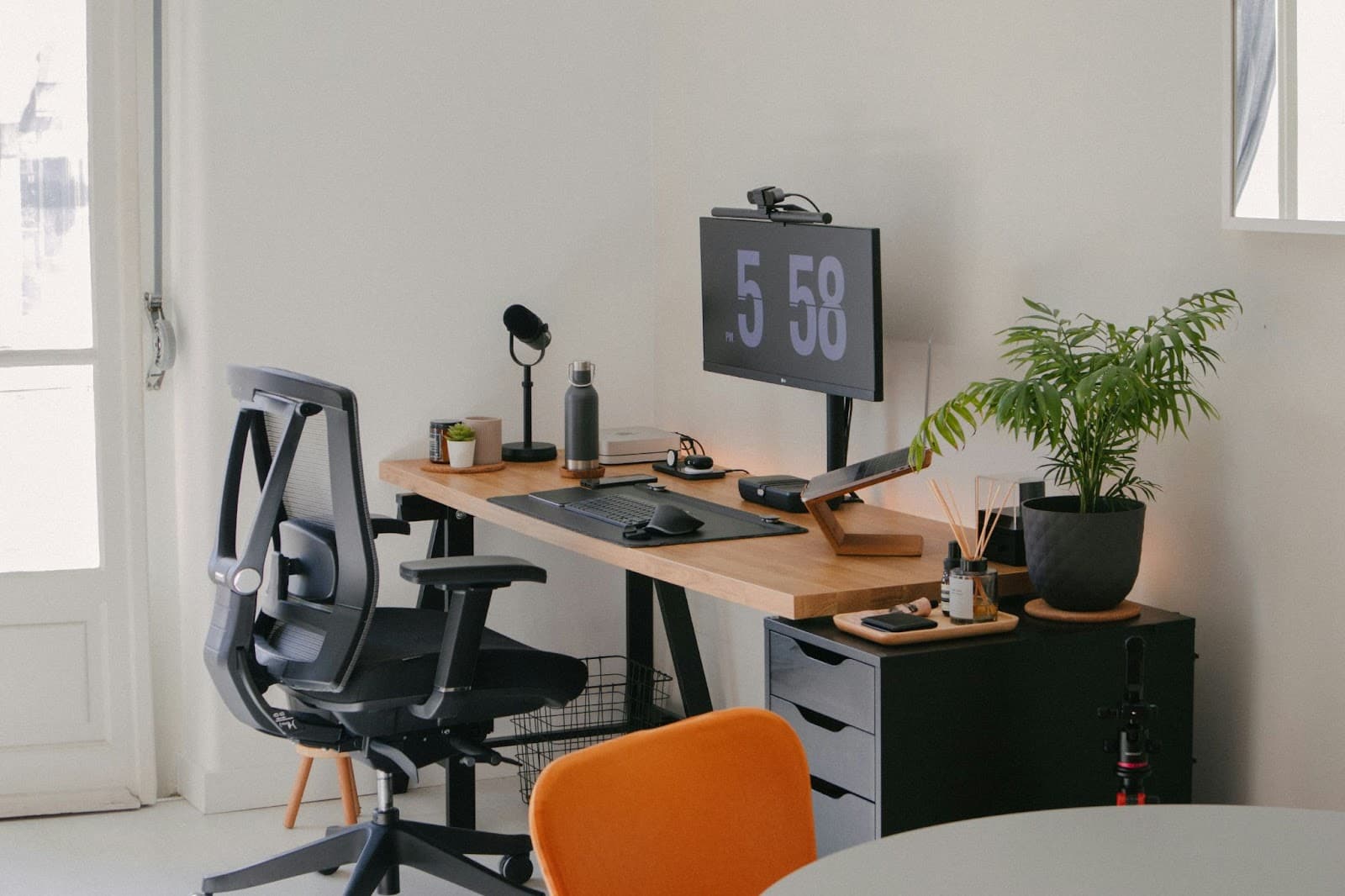The modern software developer juggles multiple tasks, from debugging to design, often under tight deadlines. As remote work becomes more prevalent, creating an optimal workspace is not just about comfort—it’s a necessity for maintaining productivity and health. An ergonomic setup is essential for developers who spend long hours in front of a computer, as it minimizes the risk of musculoskeletal injuries and maximizes efficiency.
Understanding Ergonomics in Software Development
Ergonomics involves designing or arranging workplaces, products, and systems so that they fit the people who use them. For software developers, this means setting up a workspace that promotes good posture, alleviates unnecessary strain, and facilitates easy, natural movements. Proper ergonomics not only helps in preventing common physical issues such as carpal tunnel syndrome and neck strain but also enhances mental focus and overall productivity by creating a physically supportive work environment.
Essential Components of an Ergonomic Setup and Useful Accessories

Creating an ergonomic workspace involves several key elements that align to support posture, minimize discomfort, and enhance productivity:
- Chair: A quality ergonomic chair is pivotal. It should support the natural curve of your spine with adjustable height, back angle, and armrests to fit your body precisely. This helps maintain proper posture and reduces the risk of back pain, crucial for developers spending long hours seated.
- Desk: The height of your desk should allow your arms to rest comfortably at a 90-degree angle, preventing shoulder strain. An adjustable desk is highly recommended, as it allows you to alternate between sitting and standing, thus varying your posture and reducing the risk of strain injuries over time.
- Computer Setup: Proper placement of your monitor is critical; it should be at or slightly below eye level and about an arm’s length away. This positioning helps prevent eye strain and promotes a healthy, upright posture. Ensure that the keyboard and mouse are placed to keep your wrists straight and hands at or just below elbow level, helping to avoid repetitive strain injuries.
In addition to these core components, integrating the right accessories can significantly enhance ergonomic benefits:
- Supportive Accessories: Items like lumbar support pillows are essential for supporting the lower back’s natural curve, especially during extended periods of sitting. This reduces spinal strain and is vital for those who spend substantial time in front of a computer.
- Pressure Relief Accessories: Seat cushions that evenly distribute body weight can alleviate pressure on the pelvis and hips, helping to prevent discomfort from prolonged sitting. These accessories are especially beneficial in maintaining proper circulation and preventing issues like tailbone pain.
- Alignment Accessories: Adjustable footrests and wrist rests support better overall posture. Footrests help maintain proper leg and back alignment, while wrist rests aid in maintaining a neutral hand position, critical for typing and mouse use.
Implementing Productivity Techniques
Productivity for software developers is not solely about coding speed or output but also about effective task management and focus. Here are some proven techniques:
- Eisenhower Matrix: This prioritization strategy helps developers manage tasks by categorizing them into four quadrants—urgent and important, important but not urgent, urgent but not important, and neither. For instance, coding a feature due before the day ends falls into the urgent and important quadrant, whereas refactoring code may be important but not urgent.
- Pomodoro Technique: This time management method involves working in 25-minute blocks, followed by 5-minute breaks, to maintain high levels of concentration and avoid burnout. After four “Pomodoros,” a longer break of 15-30 minutes is recommended, aiding mental recovery and sustained focus throughout the workday.
- Automating Repetitive Tasks: Developers can save significant time by automating mundane tasks like setup configurations, testing, and deployment processes using tools like Jenkins for continuous integration and continuous deployment (CI/CD) and scripting for routine actions.
The Importance of Regular Movement and Breaks

Continuous sitting has several associated health risks, including increased chances of cardiovascular diseases and musculoskeletal disorders. Regular movement and breaks are crucial:
- Physical Health: Standing up and moving every 20-30 minutes helps improve circulation, reduces the risk of deep vein thrombosis (DVT), and prevents muscle stiffness and joint pain.
- Mental Clarity: Short breaks refresh the mind, enhancing creativity and problem-solving capabilities. Integrating moderate exercises, like a quick walk or stretching during these breaks, can significantly boost mental alertness and reduce feelings of fatigue.
Implementing these practices not only supports physical and mental health but also fosters a more dynamic and productive work rhythm for software developers.
Monitoring and Adjusting Your Setup
Creating an ergonomic workspace is not a one-time task but an ongoing process that requires regular evaluation and adaptation. As your work habits and physical needs evolve, so should your workspace. Here are key practices for maintaining an optimal setup:
- Regular Assessment: Periodically review your workstation’s ergonomics. Check if the chair still provides adequate support, if the desk height is still appropriate, and if the computer setup remains optimal for your posture.
- Listen to Your Body: Be attentive to any signs of discomfort or strain, which may indicate that adjustments are needed. For instance, new or increased back pain could suggest the need for better lumbar support or a reevaluation of your chair’s ergonomics.
- Stay Updated: Ergonomic standards and technologies evolve, so keeping informed about new tools and practices can help enhance your workstation further. For example, adopting newer, more advanced ergonomic tools like dynamic sit-stand stools or keyboard trays can offer better support and flexibility.
Final Thoughts
For software developers, setting up an ergonomic workspace is crucial not only for health but also for maintaining productivity in the long term. By understanding ergonomic principles, implementing productivity techniques, and using the right tools and accessories, developers can create a workspace that fosters both efficiency and well-being. Regular movement and breaks further enhance this environment, helping to sustain focus and prevent physical strain. Continuously monitoring and adjusting your setup ensures that your workstation evolves with your needs, offering ongoing support and productivity benefits. Embracing these practices allows developers to thrive in their careers while minimizing the risk of work-related health issues.
